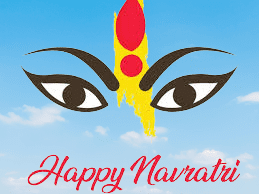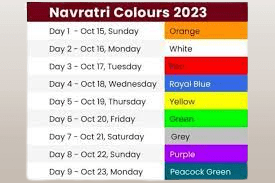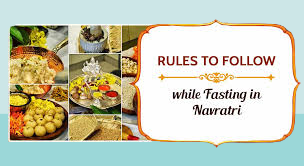Navratri 2023: Sharad Navratri or Sharadiya Navratri is starting from 15 October 2023 and this nine day festival holds a unique significance of 9 colour, pink, white,red, orange, yellow, maroon, dark blue, green, purple, beige which has a special meaning and importance.
The Hindu holiday is held to honor the goddess Durga in all of her manifestations. Hindus all across the world commemorate the nine-day holiday with great favor and devotion. Each day of the celebration is marked by the use of a new colour to symbolize a distinct aspect of the goddess. The significance of these nine hues is connected to both the goddess’s spiritual and bodily manifestations.

This annual Hindu celebration is celebrated in various parts of India and other parts of the world as well. People also participate in different events. There is the meaning of wearing nine colours: pink, white, red, orange, yellow, maroon, dark blue, green, purple, beige.
It is an annual Hindu celebration observed to honour the goddess Durga, an embodiment of the supreme goddess Adi Parashakti. The fourth Navaratri, named after the autumn season(Sharada) referred as the Sharad Navratri or Sharadiya Navratri is one of the most important celebration of the year. All around the nation, different ceremonies and traditions are used to celebrate the nine auspicious days with tremendous enthusiasm. Also, the tenth day, after the 9 auspicious days of Navratri is celebrated as Durga Puja and Dusshera to mark the triumph of good over evil.

The first day (pratipada) of the bright fortnight of the lunar month of Ashvini marks the start of Sharada Navaratri. Once a year, during this month, which usually falls in the Gregorian months of September and October, the festival is observed for nine nights. This year the festival begins on October 15 and will conclude with Dusshera on October 24, 2023.
| Date | 15-Oct-23 |
| Day | Sunday |
| Pratipada Tithi Begins | 11:24 PM on Oct 14, 2023 |
| Pratipada Tithi Ends | 12:32 AM on Oct 16, 2023 |
| Chitra Nakshatra Begins | 04:24 PM on Oct 14, 2023 |
| Chitra Nakshatra Ends | 06:13 PM on Oct 15, 2023 |
Ghatasthapana is one of the significant rituals. It marks the beginning of nine days of festivity. The ritual symbolically marks the invocation of Goddess Shakti. The most auspicious or best muhurat timing for Ghatasthapana is during the first one-third of Navratri Day 1(Pratripada). Whereas, Chitra Nakshatra is considered the most inauspicious span for Ghatsthapana.
9-Day Festival Schedule
| Date | Day | Event |
| 15-Oct | Day 1 | Ghatasthapana, Shailputri Puja |
| Sunday | Pratipada | |
| 16-Oct | Day 2 | Chandra Darshana, Brahmacharini Puja |
| Monday | Dwitiya | |
| 17-Oct | Day 3 | Sindoor Tritiya, Chandraghanta Puja |
| Tuesday | Tritiya | |
| 18-Oct | Day 4 | Kushmanda Puja, Vinayaka Chaturthi |
| Wednesday | Chaturthi | |
| 19-Oct | Day 5 | Upang Lalita Vrat, Skandamata Puja |
| Thursday | Panchami | |
| 20-Oct | Day 6 | Saraswati Avahan, Katyayani Puja |
| Friday | Shashthi | |
| 21-Oct | Day 7 | Saraswati Puja, Kalaratri Puja |
| Saturday | Saptami | |
| 22-Oct | Day 8 | Durga Ashtami, Mahagauri Puja |
| Sunday | Ashtami | Sandhi Puja |
| 23-Oct | Day 9 | Maha Navami, Ayudha Puja |
| Monday | Navami | Navami Homa |
| 24-Oct | Day 10 | Navratri Parana, Durga Visarjan |
| Tuesday | Dashami | Vijayadashami |
Pink, the first colour, stands for Goddess Shailputri. Pink symbolizes kindness and nourishment. When her followers seek for food during difficult times, it is believed that Goddess Durga will grant their requests.
White, the second colour, represents Goddess Brahmacharini. White symbolizes righteousness and justice as well as purity and innocence. When her followers seek her assistance, Goddess Durga annihilates all evil and makes sure that justice is served.
Red, the third colour, stands for Mata Chandraghanta. This color represents vitality, fervor, and enthusiasm. Additionally, it stands for health and fertility. Blood is frequently associated with the color red, which is a representation of the goddess Durga’s courage and strength.
Orange, the fourth color, stands for Goddess Kushmanda. The color orange is said to stand for happiness and joy. It represents prosperity in all endeavors as well as good fortune and luck. When her worshippers seek out the assistance and protection of Goddess Durga, she makes sure that all impediments are removed from their pathways.
Yellow, the fifth color, stands for Skanda Mata, the goddess. The color yellow is cheerful and sunny and is related to wealth and abundance. It stands for good fortune and achievement in life. When her followers turn to the goddess Durga for assistance, she bestows upon them abundance in all spheres of life.
Maroon, the sixth color, represents Katyayani Mata. The color maroon stands for bravery, fortitude, and determination in the face of difficulties or peril. When someone asks the goddess Durga for help, she gives them the strength and fearlessness they need.

The goddess Kalratri is represented by the seventh color, royal blue. This color stands for wisdom, insight, truth, and clarity. When her followers turn to Goddess Durga for assistance during difficult times, it is thought that she grants them insight.
Green, the eighth color, stands for Goddess Gauri. Green symbolizes intelligence and creativity. It also represents rebirth, fertility, and expansion. When her worshippers seek her assistance, Goddess Durga bestows creativity and understanding onto them.
Bright green Siddhidatri, the ninth manifestation of the goddess, adores vivid hues, particularly peacock green. This color represents kindness, love, and serenity. The followers achieve Siddhi if Goddess Siddhidatri is happy. Use Peacock green on this day, wear garments in this color, and adorn the Goddess’s temple accordingly.
The nine-day festival of Shardiya Navaratri is here and Maa Durga devotees are busy making preparations for fasting be it buying kalash for Ghatastapana, vrat-friendly grains and snacks, or other puja samagri. Navratri is celebrated in different ways across the country. The colourful and vibrant venues of Garba and Dandiya in Gujarat, majestic pandals for Maa Durga in West Bengal or the festive display of dolls and figures in Golu in South India, Navratri is certainly one of the biggest festivals in the country.

In North India, Navratri fasting is quite popular and after the Kalash Sthapana on Day 1, devotees observe a nine-day fast or first and last fast as per the traditions of their family. Navratri Paran is done on the day of Navami with Kanya Pujan where little girls are invited for a treat of halwa puri and worshipped as kanjaks.
Let’s start with the general rules to follow during Navratri even when you are not fasting:
Many people worship Maa Durga and her various forms during the festival but do not prefer to fast or are not able to fast due to their health condition. Here’s a list of rules to follow when you aren’t keeping vrat.
Skip onion and garlic
These and certain other vegetables like mushrooms, leeks, shallots should be avoided during the course of Navratri. During the festival, it is advisable to consume satvik ahaar that fills you with devotion and also detoxes your system.
Do not shave or cut nails
Navratri is an auspicious occasion and cutting nails and shaving is prohibited during this time as this can bring bad luck, it is believed.
Do not consume alcohol and non-vegetarian food
Alcohol and non-vegetarian foods aren’t permitted during Navratri as they come under the category of tamsic foods.
Do not gossip
During Navratri, it is not just the purity of food and surrounding that matters, but also of thoughts. Saying and thinking negative things about others and gossiping should be avoided.
1. Sattvik and vrat-friendly foods
During Navratri, wheat, rice, processed salt and most of vegetables like brinjal, okra, mushroom are avoided. Vrat-friendly grains like ragi, samak chawal, singhara atta, sabudana, farali flour, amaranth and fruits like banana, apple, oranges, etc are recommended. One can have sendha namak instead of the regular processed salt.
2. Perform morning and evening aarti
During Navratri, it is advised to light Akhanda Deepak, but if not possible one can perform morning and evening aarti for Maa Durga and her different avatars. Maa Shailputri, Maa Brahmacharini, Maa Chandraghanta, Maa Kushmanda, Maa Skandamata, Maa Katyayani, Maa Kalaratri, Maa Mahagauri and Maa Siddhidatri are the nine forms of Adi Shakti.
3. Rule for Ghatasthapana
On the first day of the Navratri, Kalash Sthapana or Ghatasthapana is done. This is one of the significant rituals of the festival and should be done while Pratipada is prevailing.
4. Red flowers and red clothes for Maa Durga
During Navratri different avatars of Maa Durga are worshipped on each day. Wearing red clothes and offering red flowers to all avatars of Maa Durga in advised during Puja.
- Samvat ke chawal or banyard millet, kuttu ka aata or buckwheat flour, sabudana or sago, Rajgira, singhare ka aata or water chestnut flour.
- Potatoes, sweet potato, bottle gourd (lauki), arbi, pumpkin, spinach, bottle gourd, cucumber and carrots.
- Onion, garlic, okra, brinjal, mushroom, wheat, rice, semolina, maida, corn flour, legumes and pulses are some of the foods people should not consume while fasting.
1 thought on “When is Navratri 2023? Start Date, End Date, Rituals, Significance, History, Fasting Rules during Navratri, Do’s and Don’ts on these 9 Days”